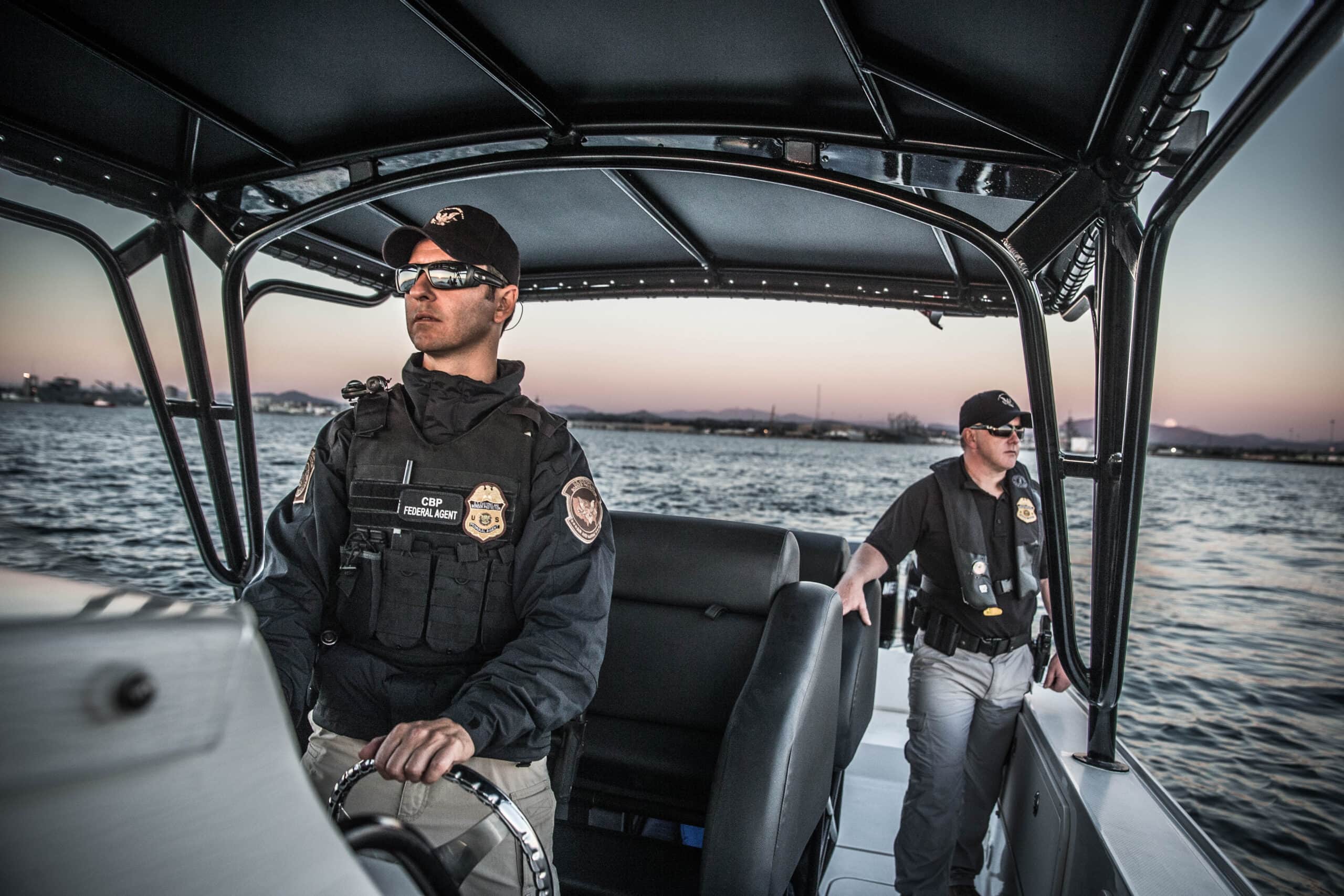


Almost 3,000 pounds of fentanyl in San Diego County between March and May, a 300% increase from the same time last year. Authorities describe the uptick in drug seizures due to a joint effort between law enforcement agents working in San Diego’s port. Customs and Border Protection agents have been working with Homeland Security to hunt down drug traffickers and stop them in their tracks.
A two-month-long enforcement effort netted a huge number of drugs. The busts, which took place over two months, netted 4,721 pounds of fentanyl and 1,700 pounds of fentanyl precursors. These drugs were headed to the streets to be pressed into pills. Instead, more than 200 arrests of alleged smugglers took place, and the government seized these drugs.
San Diego is a central hub for drug trafficking, leading to many people to addiction within the city and county. Addiction has been a significant issue in San Diego, as it has been in many other parts of the United States. The town has a complex history of addiction spanning several decades.
Drugs have always been an issue in San Diego. In the 1960s, the city grappled with heroin addiction. During the 1990s, the town had a surge of people who struggled with crack cocaine addiction and the violence associated with that. In the 2000s, however, the city succumbed to the addiction crisis caused by opioids.
Like many others, the city is still grappling with an opioid crisis. The rise of potent synthetic opioids, such as fentanyl, has resulted in a surge in overdose deaths. The accessibility of these powerful substances often sold illicitly, has exacerbated the addiction problem, and strained public health resources.
Substance use among the homeless population has become a pressing issue in San Diego. Homelessness and addiction are interconnected problems. Many individuals often turn to drugs or alcohol as a coping mechanism. San Diego has implemented various programs and initiatives to address homelessness and substance abuse simultaneously, focusing on harm reduction, treatment, and housing solutions.
“We are an epicenter for fentanyl trafficking into the United States, and we know the immense responsibility that we bear to address this crisis,” U.S. Attorney Randy Grossman said about the recent Blue Lotus Operation. “We are answering that call to action with hard work, a purpose, and a plan. Every milligram of fentanyl that we seize, and every smuggler, trafficker, and dealer we bring to justice, means less fatal doses on the streets of San Diego and beyond.”
During the operation, Homeland Security deployed eighty agents to work on drug trafficking in San Diego. In San Diego County, the two-month surge has resulted in a 300 percent increase in fentanyl seizures. There was also a 30 percent increase in defendants prosecuted for fentanyl-related crimes in the Southern District of California compared to last year.
The Blue Lotus Operation also seized fentanyl, which also tested positive for xylazine, creating a dangerous drug called “tranq dope” that leaves people physically addicted and causes gaping sores when they use it. The White House recently designated the combination of xylazine and fentanyl as an emerging threat to the United States on its growing role in overdose deaths. Xylazine is still a relatively new drug, but when a person overdoses, they may not wake up. Narcan has limited value in overdose reversal when a person has taken xylazine. It can help reverse the fentanyl overdose, but xylazine is a sedative, and there is currently no antidote to the drug.
San Diego is a great place to be in recovery and a recovery home; you’ll meet others with similar goals. Sober living is a great stepping stone for people who want to live in a stable, therapeutic environment. Give us a call to learn more about the sober lifestyle in our homes.
Fentanyl is a dangerous public health hazard across America, becoming ubiquitous as an additive to street drugs. People who use Molly, crystal meth, and even marijuana may encounter the drug accidentally. Illicit drug users are not always careful, especially those who use drugs they consider "light" or recreational. While fentanyl is everywhere, not everyone who uses illicit drugs knows about it. This means many unsuspecting users risk being killed by the drugs they consume. Sadly, it's happening across the age spectrum, from high school to the elderly.
Since the pandemic's beginning in 2020, more than 165,000 people have died from opioid overdoses. Over a million people have died from COVID-19. Because of this, three years of life expectancy has been lost among Americans collectively.
Now more than ever, fentanyl is a problem. It's become a common additive to street drugs not generally associated with opioids. Many people think they are taking party drugs or even stimulants like cocaine or crystal meth, only to be exposed to a toxic dose of fentanyl. Some of them overdose. Others may become addicted. Fentanyl is a potent drug, 50-100 times stronger than morphine. But it has also become a favorite among opioid users in California, especially in San Francisco's Tenderloin district.
With fentanyl use spiraling out of control, so are the opioid deaths among specific populations. Opioid overdoses among Black and BIPOC adults are increasing disproportionately in some parts of the country. In other parts of the country, such as California and Florida, a more significant proportion of people dying from overdoses are White. And the ages of the overdose victims tend to be younger adults, with almost 60% of OD deaths younger than 45 years old. However, no matter the demographics, it appears that fentanyl is at fault.
Counterfeit pills have become such a problem that Los Angeles has created an entire campaign surrounding counterfeit pills. The slogan for the campaign is "Bad meds kill real people." The campaign aims to educate, prevent, and enforce the law regarding counterfeit pills that could be made from fentanyl.
"The manufacturers of these counterfeit medicines only care about making money at the expense of our most vulnerable communities and community members," Los Angeles County Sheriff Robert Luna said at a press conference this week. "These medicines contain no active pharmaceutical ingredients." Instead, the medications often contain a deadly dose of fentanyl.
Streety drugs that have been found that contain fentanyl include marijuana, cocaine, crystal meth, Molly/MDMA, LSD, Adderall, and cocaine.
Harm reduction and making treatment available are essential components of keeping people safe in the community. For example, harm reduction programs can campaign for public spaces such as libraries, community centers, and schools to carry Narcan, the opioid overdose reversal drug.
Recovery is also an option for people who use substances. A treatment program, including Medication-Assisted Treatment, can also help people quit taking risks and get sober for the long term. Sobriety has many advantages for people with substance abuse disorder, including better health and peace of mind.
San Diego has a thriving recovery community with many vibrant 12-step meetings. In addition, our sober homes offer community, structure, and a sober lifestyle as you continue your recovery journey. Learn more about our programs by calling us at 760-216-2077.
Coping with the youth fentanyl overdose crisis has been scary. California has experienced a flurry of fentanyl-related overdoses within high schools. The dangers are real enough tschoolshool are going to be required to keep Naloxone, the opioid reversal drug, on hand by law. This new law aims to tackle the epidemic of fentanyl overdoses.
California recently passed Assembly Bill 19, requiring schools to keep the lifesaving drug naloxone on hand in case of accidental fentanyl overdoses. Unfortunately, high schools around the country have been experiencing this. In October, a student overdosed at a Los Angeles school during regular class hours. A few weeks later, Prince George's County, across the US, Maryland suffered a string of overdoses in public high schools.
California, in its quest to slow and end the opioid epidemic, is trying to tackle every angle. The new law would require schools in California to have at least two doses of emergency drugs such as a naloxone inhaler or canister. However, two doses may not be enough if a student overdoses on pure fentanyl. Most students who have overdosed don't even realize that their drug could be tainted, and their bodies can't handle
Fentanyl has been found in all street drugs, from cocaine and meth to Oxy and heroin. However, prevention of overdoses starts with education, and there seems to be a deficit when it comes to kids understanding the dangers of tainted street drugs.
No one wants to think of schools as a place where young possessing drugs. But that has always been the reality, regardless of the measures schools and local law enforcement take to prevent it. Many students who overdose don't know what they are taking- California is flush with fentanyl and counterfeit pills.
Schools are a place where drug education and mitigation can take place. But they are also where kids sell and swap drugs in their spare time. Adding naloxone to schools to prevent overdoses was a bipartisan measure with little opposition. The issue will come down to funding and costs. Fentanyl can be costly to keep in stock.
California has had trouble funding other programs that help with opioid use disorder. There have been wait lists for supplies of naloxone, an opioid-overdose reversal drug that can help save lives. It's recommended that anyone who uses opioids or takes them regularly should keep a supply of Naloxone on hand in case of accidental overdose. This means that schools will havesavekeep a steady supply and money will be needed.
Fentanyl is a threat to all high schools and junior high schools. Young people frequently experiment with drugs without knowing the hazards. Naloxone will be required on all of the more than 10,000 K-12 campuses in California once the bill is signed into law. Implementation would begin with middle and high schools.
Some larger school districts in Los Angeles, Sacramento, and Fresno already stock naloxone, but for the plan to succeed, the state must fund the initiative. Naloxone can be expensive, especially when it needs restocking.
Legislators also want to be able to offer schools naloxone training, opioid abuse education, and fentanyl education. Many young people don't know about the dangers of street drugs when it comes to fentanyl. Adding education to student health classes can help save lives.
If you or somebody you love is interested in sober housing, we're here to help. We offer a safe, tight-knit community focused on recovery and moving forward in life. Give us a call to learn more about our sober living programs at 760-216-2077.
